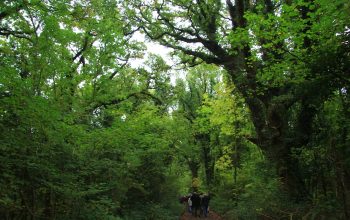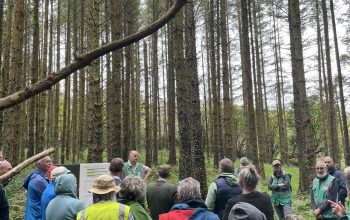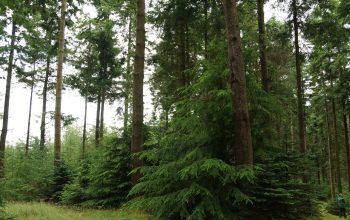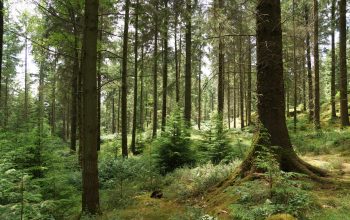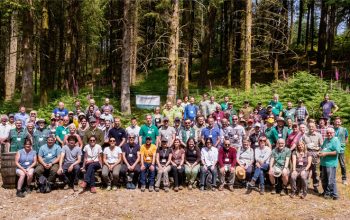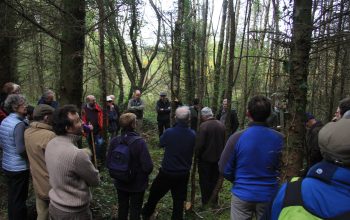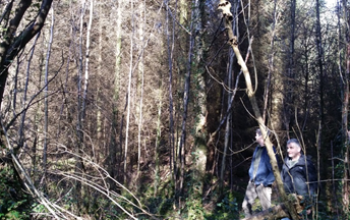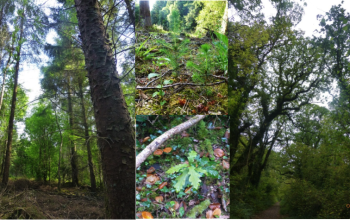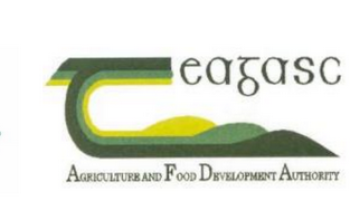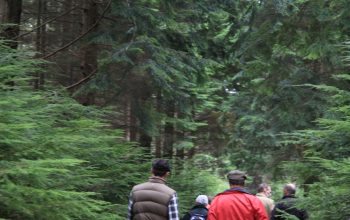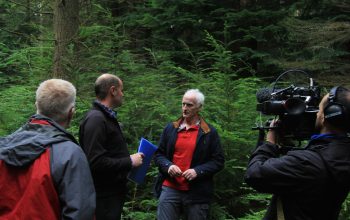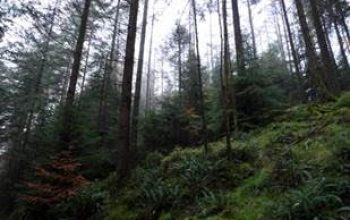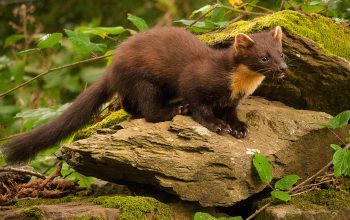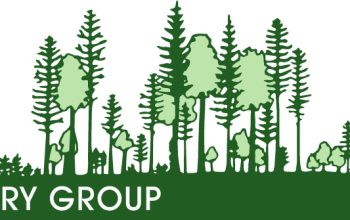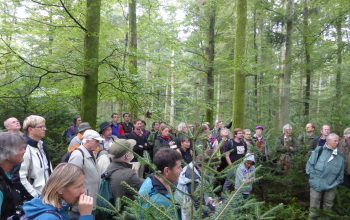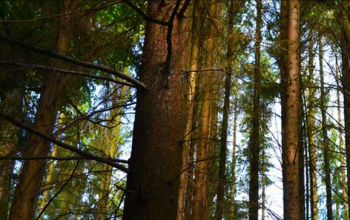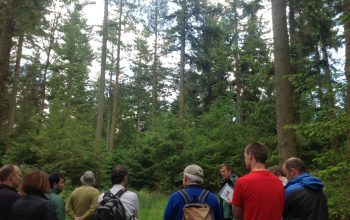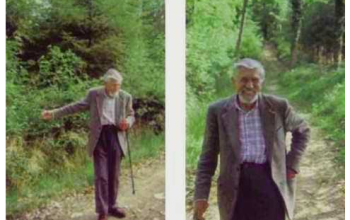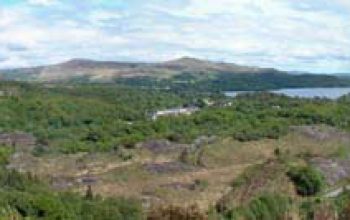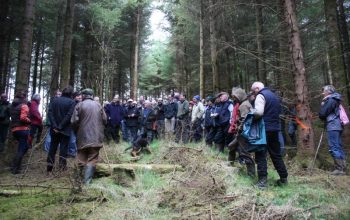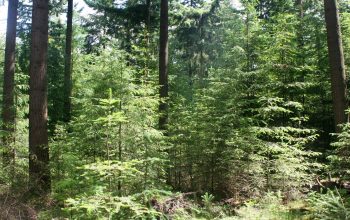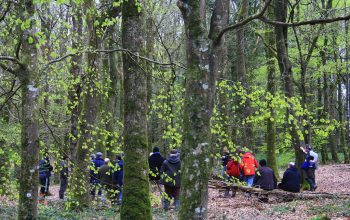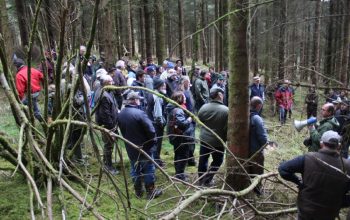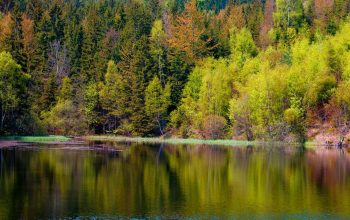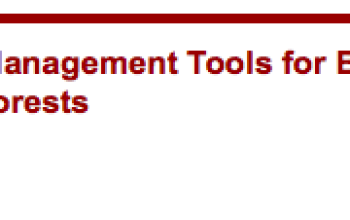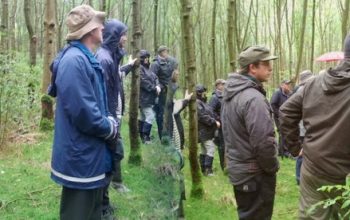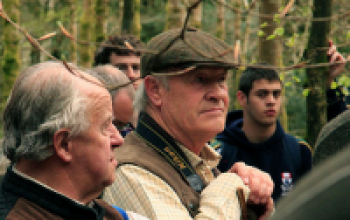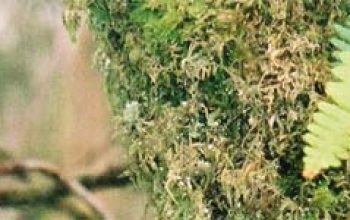Pro Silva Ireland Study Tour To Denmark, 2023
By Sean Hoskins
Denmark’s Jutland shared the lessons of its closer-to-nature forests when Pro Silva Ireland visited this autumn and discovered how people and trees put down strong roots in the sandy soils.
Day 1: St. Hjøllund Plantage
Pro Silva Denmark vice-president Jan Klinkby Østergaard welcomed some 34 Pro Silva forestry tourists to the St. Hjøllund Plantage in Central Jutland on the first day of the annual Pro Silva Ireland foreign study tour.
“We have to look up and down in the forest and back to the history and forward to the future, see what the forest tells us about what we need to produce,” Jan said.
History of Danish forests
Former St. Hjøllund forester Poul-Arne Madden laid out some of that history as he placed the establishment of the St. Hjøllund forest within the wider context of the Danish forest story, which has similarities to Ireland’s, in that centuries of deforestation for agriculture resulted in just 2-3% forest cover by 1800.
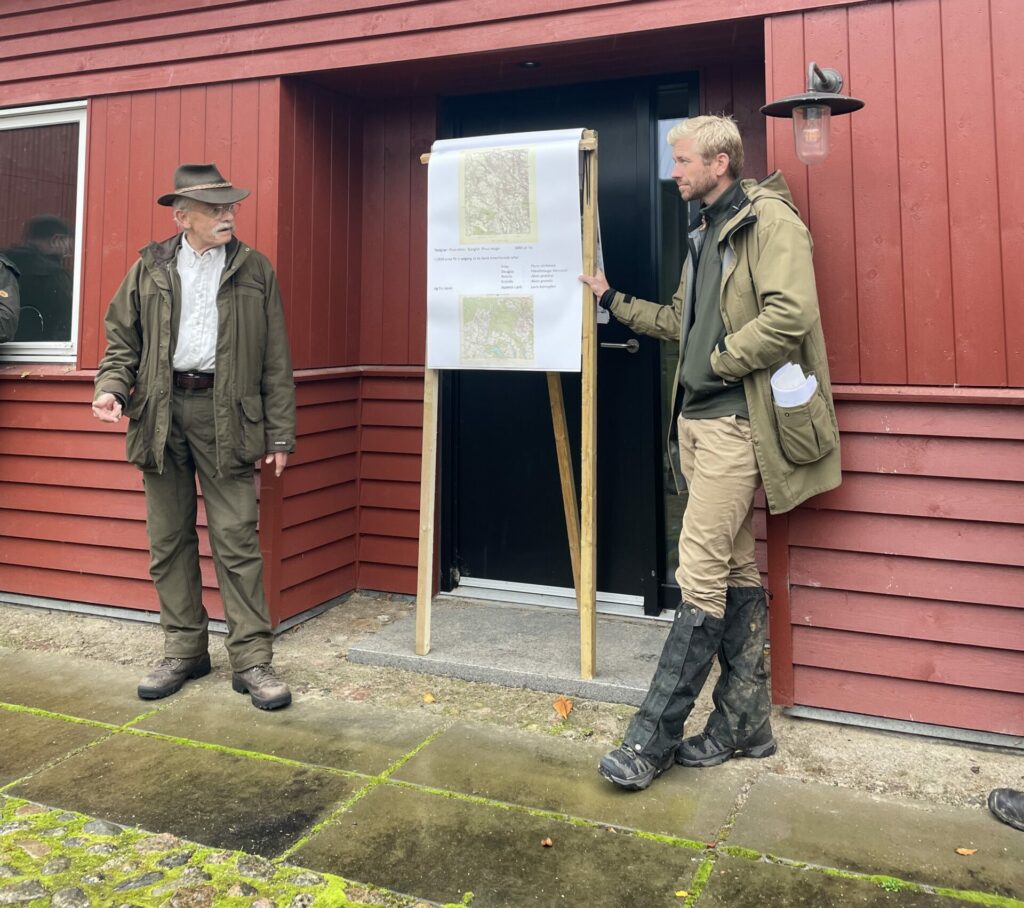
A national push for timber self-sufficiency saw extensive afforestation in Jutland, spearheaded by Danish army engineer Enrico Mylius Dalgas, who applied soil knowledge gained building roads and a knack for organisation to the project.
Cultivation of the heath and an initial stocking of Jutland’s thin sandy soils with conifer species began in the mid-1800s and by 1913 the original planned area was nearly finished.
Poul-Arne’s forestry roots go deep, his great grandfather was trained by Dalgas in a forestry school set up to provide foresters for Jutland’s burgeoning woodland. His grandfather also worked as a forester on the St. Hjøllund estate, eventually buying a portion of the forest when the ducal owner died.
In 2015, Poul-Arne’s family sold some of their St. Hjøllund forests and the LEGO family now hold 1,400ha of the 90% conifer forest.
In his time as St. Hjøllund forester, Poul-Arne developed pioneering techniques utilising natural regeneration to restock harvested plots, initially motivated by economics.
“I used to call it cash-close-forestry but now it is close-to-nature forestry!” he said.
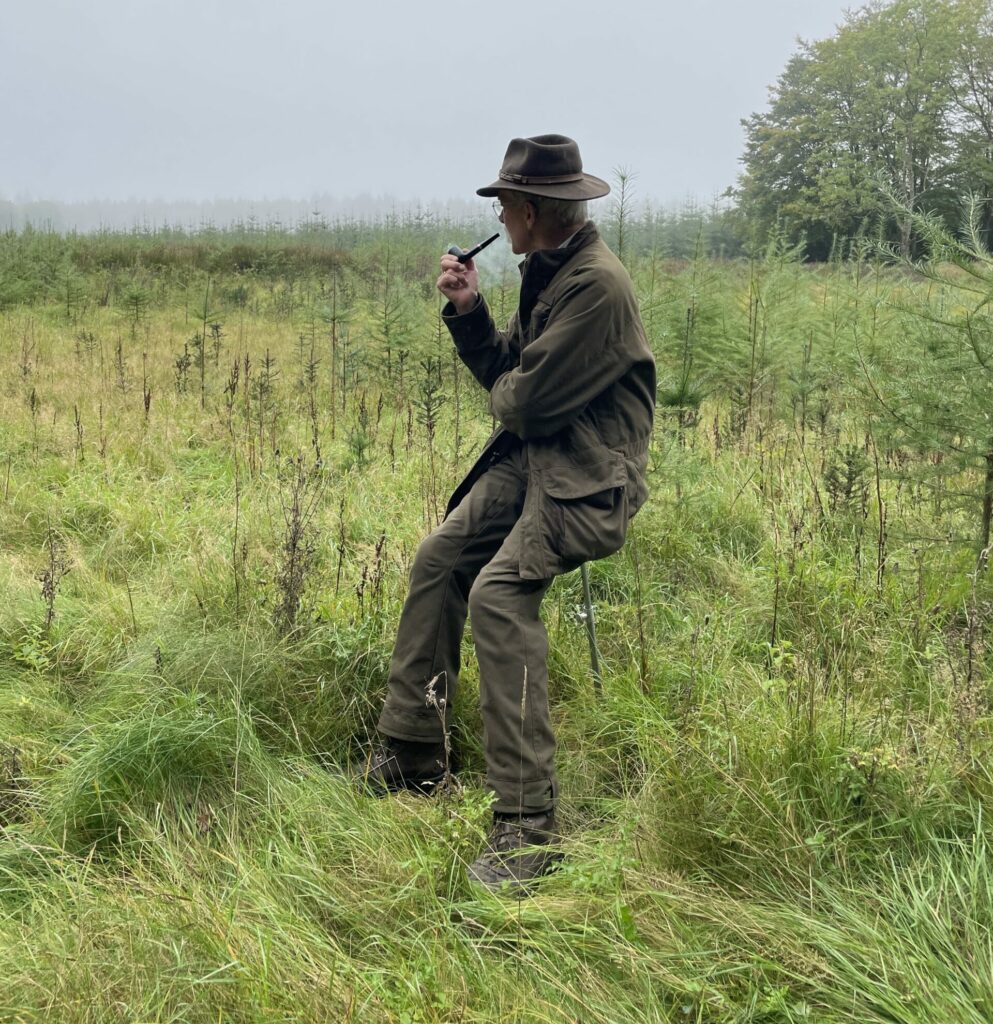

Shelterwood system
The tour party made a circuit of several different plots throughout the day, led by current St. Hjøllund forester, Søren Strunge. Søren described the varied shelterwood systems utilised by St. Hjøllund as “closer-to nature”, and while lacking the structural and age diversity of a full CCF system, it did utilise multiple species for resilience and natural regeneration to restock.
Some plots worked a standard shelterwood system, whereby stands were thinned very evenly throughout, and following what in a clearcut system would be the final thinning, the harvestable cohort is left as an evenly spaced overstorey to provide a seed source and shelter for natural regeneration and then felled as income is needed, eventually being entirely removed and replaced by the new, naturally regenerated, even-aged cohort.


In a Norway spruce-dominated plot, Søren was taking a different approach. Unlike the standard homogenous spacing resulting from evenly thinning stands, a group approach to thinning was utilised.
“If we did a homogeneous thin here, the social structure would suffer, trees would tumble, come down in storms. Instead, here we take out groups,” he explained.
Søren said the aim was to transfer the social stability over time to the individual trees of the overstorey, where they would remain as a seed source.
A group approach was also being used in enrichment planting to diversify the species mix in the forest, for resilience against an uncertain future climate.
Lessons for Ireland
Many of the challenges faced by the Jutland foresters were familiar to Irish forest owners, foresters and others involved in forest management, including deer and stand stability.
While there were similarities, often there was difference in the details. The Jutlanders had sandy soils of low fertility to contend with, which meant slow growth rates and a lot slower cycling of tree generations, which had implications for hurrying forests with low species diversity towards a more resilient multi-species profile.
The Irish group observed that this could be done more quickly in Ireland, with faster growth rates, due to a more temperate climate and fertile soils. However, high fertility also means more competition for natural regeneration on the forest floor, whereas the Jutland ground-layer was generally a bramble-free carpet of moss and needles where trees grew with little competition. This was much envied by the Irish. The slower growth rates also meant quality logs that were very uniform in their diameter along the length of the sawlog.
Deer were a common concern. As in Ireland, deer browsing preference in Jutland forests could result in less tree species diversity in natural regeneration.
“We have to be very careful as otherwise the Sitka will take over, as it’s the only one the deer don’t eat,” said Poul-Arne.
Søren pointed out a small, fenced deer exclusion pen, used to monitor deer browsing intensity. Unbrowsed natural regeneration in the pen could be compared with the deer browsed surrounding forest, and an assessment made as to how many deer should be culled during the annual driven shoots, to keep numbers low enough for natural tree restocking.
There were challenges in managing more diverse stands, which the St. Hjøllund foresters were familiar with from managing some of the original mixed stands of the estate, said Søren.
The thing about mixed species is making them work together. We saw a lot of mixed stands here and often the species we start with don’t work together,” he said.
This was remedied through thinning at the right intensity, targeting the right species at the right time.
“The spruces take over the Douglas Fir if left so we have to get in early,” Søren said.
Day 2: Salten Langsø Skov
The second day of the tour took in a private forest of 600ha, with multiple owners, but managed by the Salten Langsø Skov A/S (SLS A/S) management company, which is collectively owned by some 74 woodland owners.
SLS A/S – a forest management company owned by forest owners
Lead SLS A/S forester and Pro Silva Denmark vice-president, Jan Klinkby Østergaard, explained how forest owners held a share in the company for each 50ha they put under SLS A/S management.
SLS A/S managed more than 100 different forests in Jutland, totalling 8,000ha, most of which was under closer-to-nature management, Jan said.
Retired SLS A/S forester and Pro Silva Denmark president, Niels Peter Dalsgaard Jensen, joint-hosted the day at the Salten Langsø Skov forest, where he began working in 1985, when the prescribed management of the day was clearfell and restock rotation.


Transforming the forests
“Frost and growth (of replacement trees) were a huge problem when we used clear it, it was too costly, so I looked for a new way,” Niels Peter said.
Niels Peter began to consider using the natural regeneration he was observing to restock harvested stands as a hedge against frost. “There would be more citizens against the frost,” he said.
Jan detailed how one winter some Norway spruce trees did not go fully dormant and became very stressed from mid-winter on. The stressed trees set cones, resulting in lots of regeneration, which the SLA A/S foresters were pleased to utilise.
“Anything I get for free I’m happy,” Jan said.
Maximising natural regeneration
When using natural seed sources, the Jutlanders increase the chance of seeds taking root by using a tracked machine with an auger to cultivate small areas where seed is likely to fall, exposing the sandy soil beneath the ground flora layer, which was a better medium for seed establishment, said Jan.
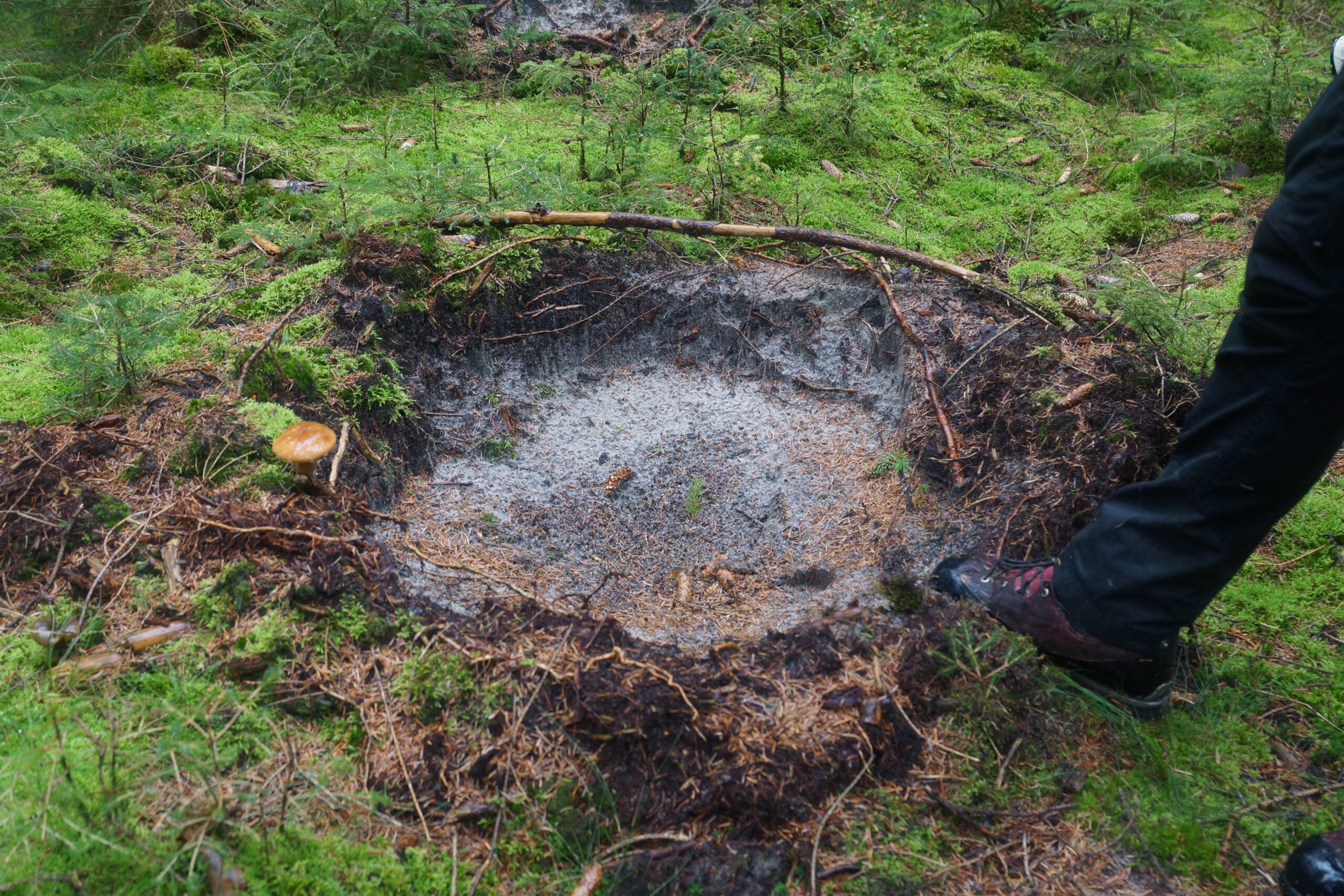

He explained that foresters carefully monitored the seed situation in the mature trees, anticipating years when a seed drop was likely, and timing thinning and cultivation to maximise the event. Ground cultivation was done before seed drop, with harvest or thinning after seed drop.
Climate change
Jan said the mild winter which had precipitated the Norway spruce dieback was a sure signal of climate change and while the spruce regeneration was welcomed, he didn’t want another pure spruce stand and had introduced Douglas fir through planting. However, the Douglas had struggled against the spruce. The stand had been thinned to waste to release Douglas from spruce competition.
One interesting observation in one of the shelterwood stands with veteran Norway Spruce, was that Norway was more stable as a lone tree in the shelterwood than Sitka Spruce.
“They don’t tumble,” said Jan.
Day 3: Kogleskoven Forest
Pro Silva Ireland’s Danish hosts saved some of the best for last, when on the final day of the tour, Niels Peter hosted the group at his own private forest.
Niels Peter had purchased the 10ha Kogleskoven Forest and over the last 15 years has put his CCF experience to the test in transforming the predominantly conifer plantation to continuous cover management.
Some plots were established in the 1940s, and the original plantation expanded again in the 1960s. Niels Peter said his aims were to maintain productivity while promoting habitats and biodiversity.
A lesson in CCF management
“The objective of forestry here is to build up a beautiful continuous cover forestry system,” Niels Peter said.
The forest needed to have a commercial objective, otherwise the tax system would deign Kogleskoven a hobby property, with a corresponding higher tax rate.
“And I want it to be forestry and I want to show that you can earn in this kind of forest,” Niels Peter said.
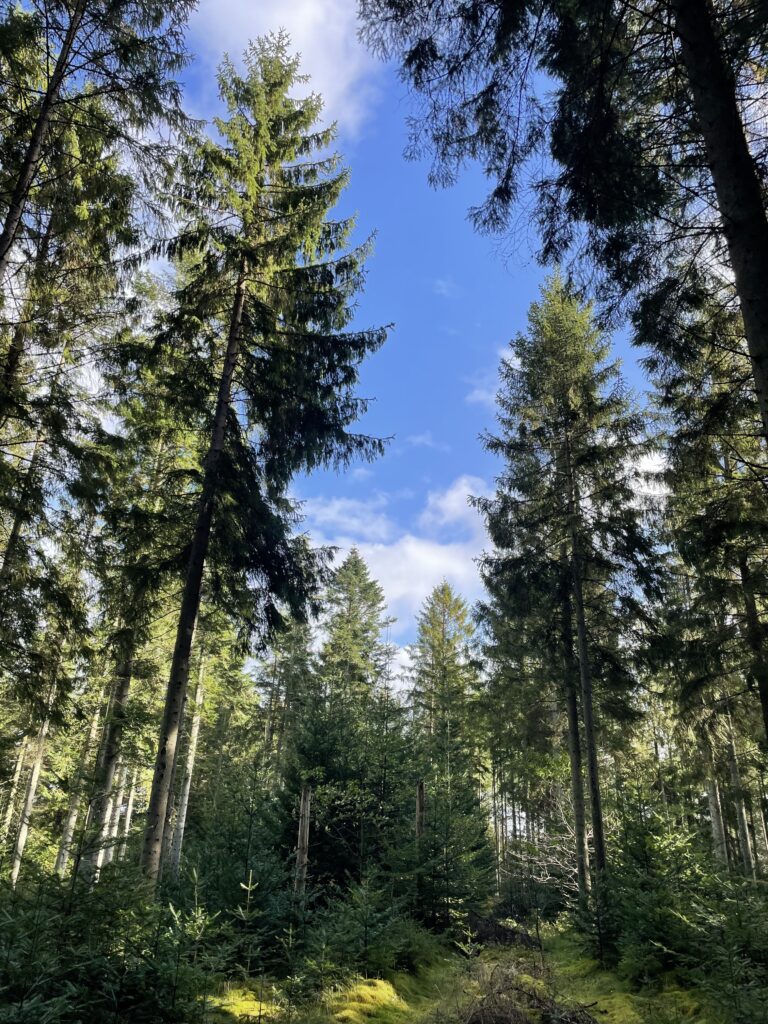

On average, the forest had produced some 98m3/year over the last 17 years. The figures included trees that were windblown in a storm event in 2005. Niels Peter reckoned the forest had an annual average increment of 6m3/ha/year.
And he would know, having established some 30 permanent sample plots to measure the transformation from plantation to CCF forest. Although, on the subject of basal area as a metric, Niels Peter made an interesting point.
He walked the group to a stop where the distribution of the standing trees, intermixed with regeneration of several cohorts, was noticeably clumpy.
“Basal area can’t show this distribution of the trees,” Niels Peter said.
The plot demonstrated how it was possible to record a higher basal area and still have regeneration if the distribution of the trees allowed it through the presence of small clearings.


Niels Peter had used enrichment planting to diversify the species profile of the forest over time, expanding the original plots of spruce, grand fir and larch with Douglas fir, Western red cedar and other conifers, along with sycamore and beech.
Niels Peter had a word of advice on beech. While known as a shade tolerant species, Niels said beyond that, too much light was actively detrimental to growing quality beech. It was more appropriate as an enrichment planting species than an afforestation one.
Regeneration
The was also natural regeneration of other conifer and broadleaf species, including oak and birch. As well as some human-assisted seed-based regeneration. When asked how far away an oak seedling’s acorn had come from, Niels Peter quipped, “from my pocket”.
Niels Peter had been broadcast sowing acorns for years, and some had survived, adding to those transported to the site by Jays.
Niels explained some of the challenges, along with his observations, around natural regeneration. On the challenge of managing light conditions, he said light could be introduced not just from above, but from the side, by opening up gaps on the south facing side of areas requiring natural regeneration.
When you thin, look south when you need to make more light for seedlings. Make a window,” he said.
The combination of Norway spruce with broadleaves regeneration had worked well at Kogleskoven as the spruce protected some of the broadleaves from deer browsing.
Acknowledgements
Pro Silva Ireland, and all those who travelled to Denmark, would like to extend a sincere thanks to our wonderful hosts in Jutland, for their generous welcome, thoughtful programme of events, sharing of expertise and in particular, their incredible hospitality. All those who travelled came home with great memories of Denmark, new knowledge and ideas, and even a bit of LEGO.
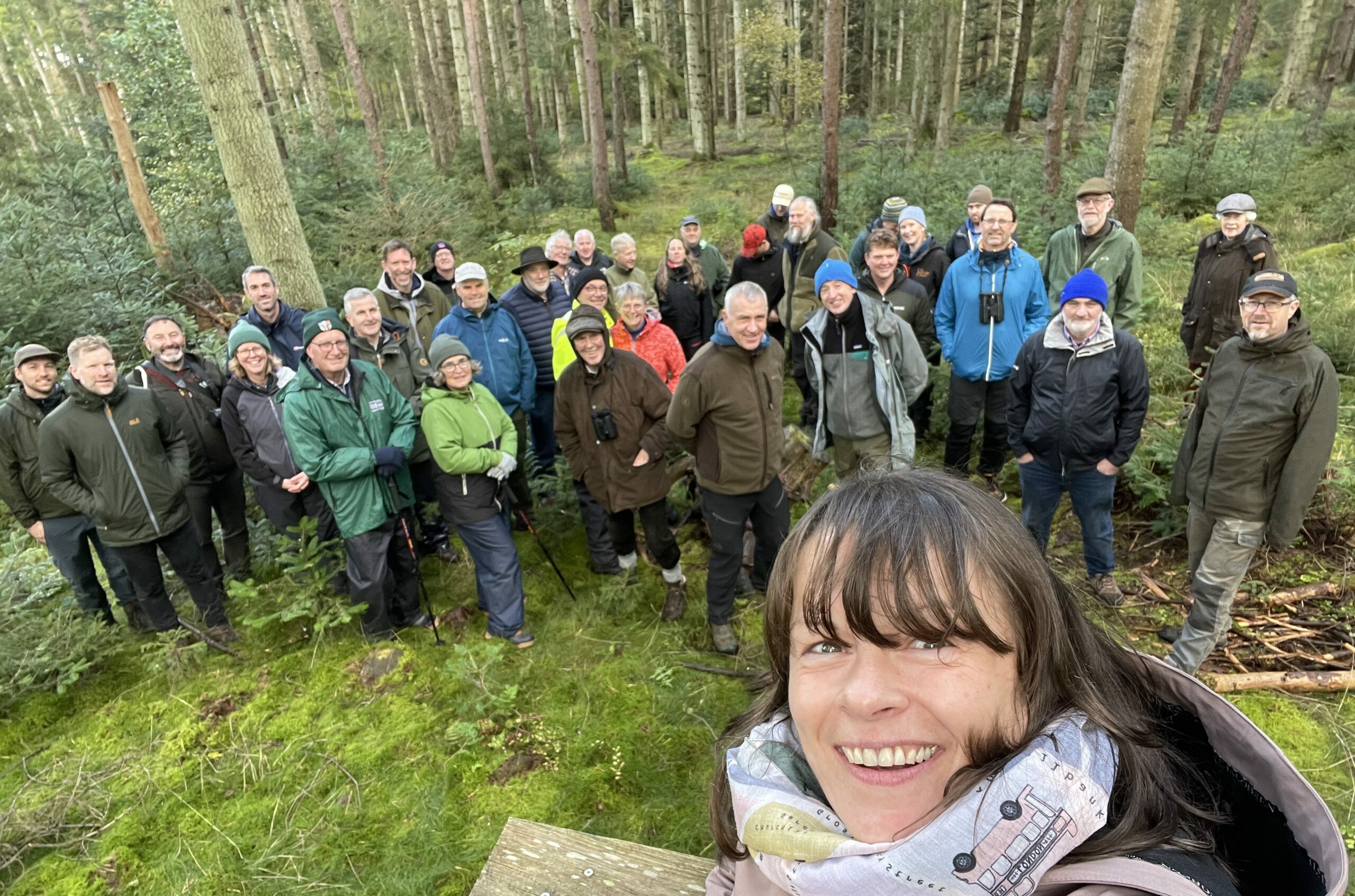

Ted Wilson has also written an excellent meeting report on the Pro Silva Ireland Study Tour to Denmark, 2023, which can be found on his website Silviculture Research International
https://silviculture.org.uk/continuous-cover-forestry-ccf-in-central-jutland-denmark/

